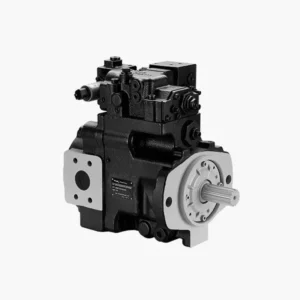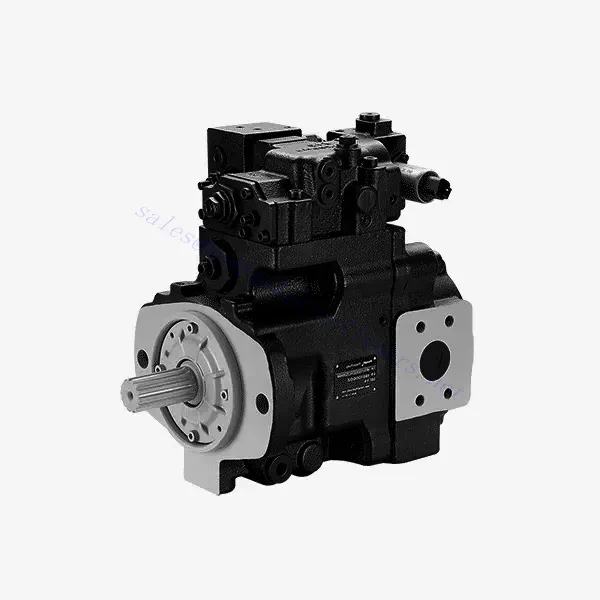HP3V-S Series Axial Piston Variable Displacement Hydraulic Pump
En tant que fabricant, fournisseur et exportateur de produits mécaniques, nous proposons des vérins hydrauliques et de nombreux autres produits.
N'hésitez pas à nous contacter pour plus de détails.
Courrier :sales@hydraulic-cylinders.net
Fabricant fournisseur exportateur de vérins hydrauliques.
HP3V-S Series Axial Piston Variable Displacement Hydraulic Pump

The HP3V-S series axial piston variable displacement hydraulic pump is a cutting-edge solution that revolutionizes hydraulic systems. With its exceptional efficiency and outstanding performance, this pump is indispensable in various industrial applications. This comprehensive article will explore the key characteristics, usage methods, and maintenance guidelines for the HP3V-S series axial piston variable displacement hydraulic pump.
The HP3V-S series axial piston variable displacement hydraulic pump is a powerful and efficient solution for hydraulic systems. With its variable displacement technology, compact design, and quiet operation, this pump delivers exceptional performance across various industrial applications. By following the recommended usage methods and adhering to regular maintenance practices, the hp3v-s series pump will continue to provide outstanding performance, contributing to the success of hydraulic systems. Embrace the power of efficiency and performance with the hp3v-s series axial piston variable displacement hydraulic pump and unlock the full potential of your hydraulic system.
HP3V-S Series Axial Piston Variable Displacement Hydraulic Pump Key Characteristics:
- Variable Displacement Technology: Equipped with advanced variable displacement technology, the HP3V-S series pump allows for precise output volume adjustment to match specific system requirements. This feature maximizes energy efficiency, reduces heat generation, and optimizes overall system performance.
- Unparalleled Efficiency: The HP3V-S series pump employs an innovative axial piston design that delivers exceptional efficiency. Precise hydraulic power ensures smooth operation and effortlessly handles high-pressure applications.
- Compact and Versatile: The pump’s compact design enables easy integration into hydraulic systems with limited space. Its versatility allows it to be utilized across various applications without compromising performance or functionality.
- Quiet and Reliable Operation: Noise reduction features incorporated into the HP3V-S series pump ensure quiet operation in diverse industrial environments. This characteristic is precious in applications that require low noise levels, promoting a comfortable and productive work environment. Additionally, the pump’s robust construction ensures long-lasting reliability.
HP3V-S Series Axial Piston Variable Displacement Hydraulic Pump Parameter:
| Size | HP5VS28 | HP5V28 | HP5V45 | HP5V60 | HP5V76 | HP5V85 | HP5V105 | |
| Displacement (cc/rev) | 28 | 28 | 45 | 60 | 76 | 85 | 104.3 | |
| Pressure | Rated pressure(bar) | 250 | 320 | 320 | 250 | 320 | 280 | 350 |
| Peak pressure(bar) | 315 | 350 | 350 | 280 | 350 | 320 | 400 | |
| Rotation speed r/min | Max for self-priming *1 (bar) | 3000 | 3000 | 2700 | 2400 | 2400 | 2400 | 2200 |
| Max*2 (bar) | 3600 | 3600 | 3250 | 3000 | 3000 | 3000 | 2600 | |
| Weight (Kg) | 17.2 | 20 | 24 | 24 | 28 | 28 | 45 | |
| Quantity of oil to fill pump case (L) | 0.55 | 0.6 | 0.6 | 0.6 | 0.8 | 0.8 | 1 | |
| Temperature Range(℃) | -20~95 | |||||||
| Temperature Range(mm2/s) | 10-1000*3(The best use of viscosity range 16~36 mm2/s) | |||||||
HP3V-S Series Axial Piston Variable Displacement Hydraulic Pump Advantages:
• Variable pump in swash-plate design for open circuit.
• Compared with products in the existing market, reinforced drive shaft, high-strength cylinder material are utilized leading to the performance of continuous pressure of more than 320 bar.
• Heavy-duty bearings such as cylindrical rollers are adopted to enhance load carrying capacity and long service life.
• High power to weight ratio.
• Available with American (SAE) and Japanese (JIS) mounting flanges and shafts.
• Excellent reliability and long life.
• Variety of control options.
• Optional through drive.
• Quick control response.
• Low pressure pulsation and low noise.
• Developed for engineering, mobile vehicles,industrial, other industrial application and agricultural machinery
HP3V-S Series Axial Piston Variable Displacement Hydraulic Pump Application:

Usage Method Of HP3V Series Axial Piston Variable Displacement Hydraulic Pump:
- Installation: Select an appropriate location within the hydraulic system to install the HP3V-S series axial piston variable displacement Hydraulic Pump. Ensure proper alignment and secure attachment to the system’s structure using suitable mounting brackets or accessories.
- Integration with Hydraulic System: Connect the pump to the hydraulic system using compatible hoses, fittings, and valves. Ensure all connections are secure, leak-free, and correctly tightened to guarantee optimal hydraulic performance.
- Fluid Compatibility: Verify that the hydraulic fluid used in the system is compatible with the HP3V-S series pump. Refer to the manufacturer’s recommendations for the appropriate fluid type, viscosity, and temperature range. Regularly monitor and maintain the hydraulic fluid to ensure proper pump operation and longevity.
- Operational Parameters: Familiarize yourself with the pump’s control options and adjust the operating parameters according to the specific requirements of the hydraulic system. Monitor and change the pump’s displacement settings to optimize performance and energy efficiency.
Comment reconstruire un vérin hydraulique ?
Rebuilding a hydraulic cylinder involves disassembling, inspecting, replacing worn or damaged components, and reassembling the cylinder. Here’s a step-by-step guide on how to rebuild a hydraulic cylinder:
- Preparation:
- Ensure the hydraulic system is depressurized and disconnected.
- Clean the exterior of the cylinder to prevent contamination during the rebuild process.
- Place the cylinder on a stable work surface and secure it using clamps or a vise.
- Disassembly:
- Remove the end caps of the cylinder using the appropriate tools and techniques outlined by the manufacturer.
- Carefully remove the piston and rod assembly from the cylinder barrel.
- Take note of the sequence in which the components are removed to ensure correct reassembly.
- Inspection:
- Thoroughly inspect all components for signs of wear, damage, or contamination.
- Check the cylinder barrel for scoring, pitting, or rust. If significant damage is present, the barrel may need to be replaced.
- Examine the piston, rod, and seals for wear, nicks, or scratches. Replace any damaged parts.
- Component Replacement:
- Replace the piston seals, rod seals, and any O-rings or gaskets that show signs of wear or damage.
- Ensure that the replacement components are compatible with the specific hydraulic cylinder model.
- Lubricate the new seals and O-rings with hydraulic oil before installation.
- Reassembly:
- Begin reassembly by inserting the piston and rod assembly back into the cylinder barrel.
- Apply a thin film of hydraulic oil to the cylinder barrel and seals to aid in smooth reassembly.
- Carefully align the components and slide the piston assembly into the cylinder barrel.
- Attach the end caps, ensuring proper alignment and tightness according to the manufacturer’s specifications.
- Testing and Installation:
- Once the cylinder is reassembled, conduct a pressure test to ensure it functions properly.
- Connect the hydraulic system and gradually increase the pressure while checking for leaks or abnormal behavior.
- If the cylinder passes the pressure test, it is ready for installation back into the hydraulic system.
- Regular Maintenance:
- Implement a regular maintenance schedule to prolong the life of the rebuilt hydraulic cylinder.
- Monitor the cylinder for signs of leakage, excessive wear, or other issues.
- Clean the exterior regularly and keep the hydraulic fluid at the proper level.
Capacité de l'usine :
(1) Assemblage
We have a first-class independent research and development assembly platform. The hydraulic cylinder production workshop has four semi-automatic lifting cylinder assembly lines and one automatic tilt cylinder assembly line, with a designed annual production capacity of 1 million pieces. The special cylinder workshop is equipped with various specifications of a semi-automatic cleaning assembly system with a designed annual production capacity of 200,000 and equipped with famous CNC machining equipment, a machining center, a high-precision cylinder processing special equipment, a robot welding machine, an automatic cleaning machine, automatic cylinder assembly machine, and automatic painting production line. Existing critical equipment of more than 300 sets (sets). The optimal allocation and efficient use of equipment resources ensure the accuracy requirements of products and meet the high-quality needs of products.


(2) Usinage
L'atelier d'usinage est équipé d'un centre de tournage sur rail incliné personnalisé, d'un centre d'usinage, d'une machine à honer à grande vitesse, d'un robot de soudage et d'autres équipements connexes, qui peuvent traiter des tubes cylindriques d'un diamètre intérieur maximal de 400 mm et d'une longueur maximale de 6 mètres.

(3) Soudage

(4) Peinture et revêtement
Avec des lignes de revêtement de peinture à base d'eau automatiques à cylindre de petite et moyenne taille, pour réaliser le chargement et le déchargement automatiques par robot et la pulvérisation automatique, la capacité de conception est de 4 000 pièces par équipe ;
Nous disposons également d'une ligne de production de peinture semi-automatique pour gros cylindres, alimentée par une chaîne de traction, d'une capacité de conception de 60 caisses par équipe.


(5) Essais
Nous disposons d'installations d'inspection et de bancs d'essai de premier ordre pour garantir que les performances de la bouteille sont conformes aux exigences.

We are one of the best hydraulic cylinder manufacturers. We can offer comprehensive hydraulic cylinders. We also provide corresponding boîtes de vitesses agricoles. We have exported our products to clients worldwide and earned a good reputation because of our superior product quality and after-sales service. We welcome customers at home and abroad to contact us to negotiate business, exchange information, and coopérer avec nous!
Visitez notre usine de RV :
Visitez notre usine de RV avec les éléments suivants
Vérin hydraulique Application :


